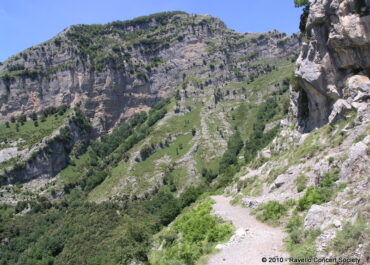The masterpieces of nature: rocks, cliffs and other geomorphological features

This itinerary allows the visitor to live unforgettable experiences, in contact with nature, by dividing the visit in more parts. The naturalistic testimonies collected along this pathway meet all tastes of those who want to immerse themselves in the nature of the Amalfi Coast. You can admire the deep valleys surrounding the inhabited areas of Amalfi and Positano, where the high rate of humidity ensured by the stream waters has produced a kind of tropical climate, which allows the growth of a very rich and special vegetation. But you can also enjoy a view of the Amalfi Coast from above, by following the so called Gods’ Path, which allows you to enjoy the view of the most beautiful panoramic points of the area, or you can immerse yourself into the atmospheres which have magically captured many famous visitors of the Coast, when they came in contact with nature and the architecture existing in the Furore Fjord, or you can enjoy the flavours and colours of the Mediterranean shrub of the Orso Cape in Maiori, where even rocks are shaped as building complexes stirring the visitor’s imagination.
The door to the itinerary towards Scala opens the visitor the view of a still uncontaminated nature, developing itself into hilly and mountain areas, thus reaching very high altitudes.
You can follow the itinerary by car, running along the state road which gets to Positano, passing by the centres of Maiori, Amalfi, Furore and Praiano, and by taking a detour at Castiglione (Ravello) to reach Scala, that is by using public means of transport, with interchanges in the main centres of the Coast, in order to reach the starting points of the different naturalistic itineraries.
Then the single itineraries must be covered on foot.
The Amalfi Coast is a part of the southern side of Lattari Mountains, characterized by steep coastal slopes, sometimes interrupted by sandy-detrital coastal areas, which have developed mostly at the mouth of the major streams. These reliefs correspond to the upper part of the Sorrento peninsula, with an ENW-WSW line, made up with carbonate rocks and stratified dolomines of the mesozoic Age and flaps of silicoplastic deposits dating back to the high miocene age. The surface uplift up to an altitude of 1400 metres above sea level, is linked to more or less complex geodynamic events, which have performed their action along many stages, since the lower pleistocene age, through phenomenona of extensional tectonics, to which high relief energies and the cracking of the limestone substrate, are due.
Abstract from E. Esposito, C. Violante, L’ambiente fisico: caratteristiche geologiche, in Piano di Gestione Costiera Amalfitana

